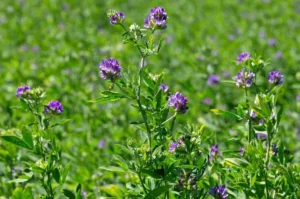Garlic Granules

Garlic Granules are a dried and ground form of garlic, offering a convenient way to incorporate the potent flavor and health benefits of garlic into various dishes. Made from fresh garlic cloves that have been dehydrated and granulated, Garlic Granules retain much of the flavor and aroma of fresh garlic, making them a popular choice in cooking and seasoning. They are easy to store and have a long shelf life, providing a handy alternative to fresh garlic.
1. Size:
- Garlic Granules are typically about 1 to 2 millimeters in diameter, making them larger than garlic powder but smaller than minced garlic. The granules are uniform in size, allowing for even distribution in recipes.
2. Color:
- The granules are a light beige to pale yellow color, depending on the variety of garlic and the drying process. The color is slightly darker than that of fresh garlic due to the dehydration process.
3. Texture:
- Garlic Granules have a coarse texture, similar to fine sand. They are dry and slightly gritty, making them easy to sprinkle over dishes or mix into recipes. Unlike garlic powder, the granules do not clump together easily, which makes them easier to use in cooking.
4. Fragrance:
- The aroma of Garlic Granules is strong and pungent, closely resembling the scent of fresh garlic. When heated, the granules release a rich, savory fragrance that enhances the flavor of various dishes.
5. Uses:
- Garlic Granules are commonly used in cooking as a seasoning for soups, stews, sauces, and marinades. They can be sprinkled over meats, vegetables, or pasta dishes to add a burst of garlic flavor without the need for peeling and chopping fresh garlic.
- Garlic has long been used in traditional medicine for its antimicrobial, antifungal, and antiviral properties. Garlic Granules can be used in herbal remedies to help boost the immune system, lower blood pressure, and improve heart health.
- Garlic Granules can be used as a natural preservative in pickling and canning processes, helping to extend the shelf life of preserved foods by inhibiting the growth of harmful bacteria.
6. Habitat:
- Garlic is cultivated in many parts of the world, including China, India, the United States, and Egypt. The plant thrives in well-drained soil and requires full sun to grow. Garlic is typically planted in the fall and harvested in the summer, with the bulbs being dried and processed into granules after harvesting.
7. Cultural and Spiritual Significance:
- Garlic has been used for centuries as a symbol of protection against evil spirits and negative energies. In various cultures, garlic cloves are hung in doorways or worn as talismans to ward off harm.
- In many cultures, garlic has been used in traditional remedies for various ailments, including respiratory infections, digestive issues, and high blood pressure. It is considered a powerful natural medicine with a wide range of applications.
Spiritual Properties
- Purification: Garlic is believed to have purifying properties, both physically and spiritually. It is used in spiritual practices to cleanse spaces and individuals of negative energies and to promote overall well-being.
- Protection: In spiritual traditions, garlic is often associated with protection against malevolent forces. It is believed to create a barrier that repels negativity and keeps harmful entities at bay.
Medicinal Properties
- Antimicrobial: Garlic is well-known for its antimicrobial properties, making it effective against bacteria, viruses, and fungi. Garlic Granules can be used in remedies to help fight infections and boost the immune system.
- Cardiovascular Health: Regular consumption of garlic has been shown to improve cardiovascular health by lowering blood pressure, reducing cholesterol levels, and improving blood circulation. Garlic Granules can be incorporated into the diet to support heart health.
- Anti-Inflammatory: Garlic contains compounds that have anti-inflammatory effects, which can help reduce inflammation in the body and alleviate symptoms of conditions like arthritis.
Allergic Reactions
Garlic Granules are generally safe for consumption, but some individuals may experience allergic reactions, particularly those with a sensitivity to garlic.
- Skin Irritation: Handling Garlic Granules may cause skin irritation or a rash in individuals with sensitive skin. It is advisable to wear gloves when handling large quantities or to wash hands thoroughly after use.
- Respiratory Issues: Inhaling the fine particles of Garlic Granules may cause respiratory irritation, including coughing or shortness of breath, particularly in those with asthma or other respiratory conditions.
- Digestive Upset: Consuming large quantities of Garlic Granules may cause digestive discomfort, including nausea, bloating, or stomach cramps. It is recommended to use garlic in moderation, especially for those with sensitive digestive systems.
- Blood Thinning Effects: Garlic is known to have blood-thinning properties, which could increase the risk of bleeding, especially in individuals taking anticoagulant medications. It is important to consult a healthcare provider before using Garlic Granules in large amounts if you are on blood-thinning medication.
- Bad Breath: One of the most common side effects of garlic consumption is bad breath, which can persist for hours after eating. Garlic Granules, like fresh garlic, can cause strong, lingering breath odor.
- Body Odor: Regular consumption of garlic can also lead to a distinct body odor, as the sulfur compounds in garlic are excreted through the skin. This side effect is more pronounced in some individuals than others.

Yarrow Flower & Leaf
Yarrow Flower & Leaf Yarrow (Achillea millefolium) is a versatile herb known for its medicinal properties and distinctive appearance. The plant features delicate, feathery leaves

Lemon Balm
Lemon Balm Lemon Balm is a perennial herb in the mint family, known for its lemon-scented leaves and small, delicate flowers. It has been used

Alfalfa Leaves
Alfalfa Leaves Alfalfa is a perennial flowering plant from the legume family, known for its high nutrient content. It is widely cultivated as a forage

Herbal Smoking Blend
Herbal Smoking Blend Herbal Smoking Blends are a mixture of various herbs, flowers, and botanicals that are combined to create a smokeable product as an

Dandelion Root
Dandelion Root Dandelion Root, derived from the Taraxacum officinale plant, is a well-known herb in traditional medicine and herbal remedies. While often regarded as a

Yellow Dock
Yellow Dock Yellow Dock, scientifically known as Rumex crispus, is a perennial herb known for its distinctive long, curly leaves and deep yellow root. It